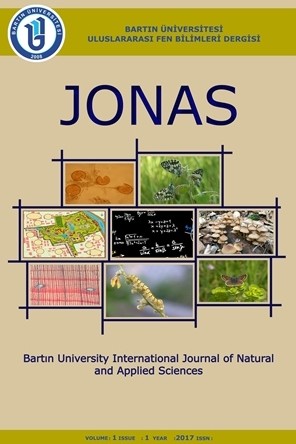PROFIT ENHANCEMENT OF MEAT PRODUCTS MARKETING : THE CASE OF FAST FOOD AGRIBUSINESS IN NIGERIA
PROFIT ENHANCEMENT OF MEAT PRODUCTS MARKETING : THE CASE OF FAST FOOD AGRIBUSINESS IN NIGERIA
Profit Enhancement strategies, meat products, Marketing Agribusiness,
___
- 1. Agricultural Economics Association of Georgia (2005). Constraints and opportunities in agricultural marketing.Agribusiness dev. Blogspot.com->2012.
- 2. Arun M. & Amirkhalkahli S. (2010). “Profitability Performance and Firm Size-Growth Relationship”. Journal of Business Research, Saint Mary’s university, Halifax, Canada. Vol. 8.9; 121-122
- 3. Azinge G.N. (2002). ‘‘A Bridged History of Asaba. A Pendulum of the talks on Asaba history.Asaba Development Union Asaba.
- 4. Delta state Ministry of Commerce and Industry (2016) Yearly Report.
- 5. Mankiw G.N. (2014). Principles of Economics, South- Western Publication 3rd Edition, ISBN 13:9780321471884.
- 6. Nabila K. & Nadeem, I.. (2015). ‘‘Entrepreneurial Impact on Formal Fast Food Sector’’. IndustrialEngineeringLetters. Vol 5:6
- 7. Paul S. (2016). “The Delicate Art of Product Placement Advertising”. How Brands Grabs You by the Subconscious.
- 8. The American heritage@ New Dictionary of Cultural Literacy (2015). Third Edition. Copyright published by Houghton Miffin Company.
- 9. Wilson T. (2016). “The history of fast food”. How fast food works. Copyright 1998-2016.
- Yayın Aralığı: Yılda 2 Sayı
- Başlangıç: 2017
- Yayıncı: Bartın Üniversitesi
ENERGY AND EXERGY ANALYSIS OF A NOVEL THREE-STAGE HEAT PUMP DRYING SYSTEM
CHANGES OF PHENOLIC COMPOUNDS IN TOMATO ASSOCIATED WITH THE HEAVY METAL STRESS
Dursun KISA, Ömer KAYIR, Necdettin SAĞLAM, Sezer ŞAHİN, Lokman ÖZTÜRK, Mahfuz ELMASTAŞ
HYDROGEN AS AN ENERGY CARRIER AND HYDROGEN PRODUCTION METHODS
Halil MUTLUBAŞ, Zafer Ömer ÖZDEMİR
PROFIT ENHANCEMENT OF MEAT PRODUCTS MARKETING : THE CASE OF FAST FOOD AGRIBUSINESS IN NIGERIA
Felix ACHOJA, Daniel Chukwujioke OKEKE, İfeyinwa Alexandra EGBUIWE
THE FACTORS THAT THREATEN THE MIGRATORY BIRDS
AN OPTIMIZED COMET ASSAY PROTOCOL FOR DROSOPHILA MELANOGASTER
AKSEKİ SARIHACILAR KÖYÜ CAMİ AHŞAP TEŞHİSİ
Barbaros YAMAN, Ali Akın AKYOL, Kısmet AKTAŞ
SOME PHYSICAL PROPERTIES OF THE BUILDING STONES FROM SOUTHEASTERN ANATOLIA REGION
FIRAT HAVZASINDA BULUNAN BAZI İLLERİN SICAKLIK VE NEM MODELLERİ
